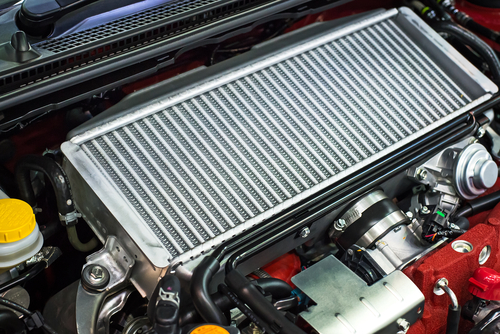Keeping your vehicle up and running the winter is essential, but the weather doesn’t make this easy. From frozen roads to frozen windscreens and pipes, the freezing temperatures pose many risks for any vehicle. The car radiator is another factor that can be negatively affected by the cold temperatures. So what are the important steps for winter maintenance for your car radiator? And how can you keep your car radiator running this winter?
What are the important steps for winter maintenance for your car radiator?
There are a number of important steps to take to provide effective maintenance for your car radiator this winter. These include:
- Checking the coolant level and condition
- Checking the radiator hoses
- Checking the radiator cap
- Cleaning the radiator
- Inspecting the thermostat
Checking the coolant level and condition
One of the most important steps to take for winter car radiator maintenance is checking the coolant level. The coolant, also known as antifreeze, plays a crucial role in preventing the water in the radiator from freezing, which is most important during the winter months. As a result, you will need to ensure that the coolant level is at the recommended level, as specified in your car owners manual. If the coolant level is low, top it up with the appropriate coolant mixture.
In addition, it’s essential to inspect the condition of the coolant. This is because over time, coolant can break down and become less effective. You should consider having a coolant flush if your vehicle has not had one recently, because a fresh supply of clean coolant can help to maintain the proper temperature of the engine, and prevent corrosion within the radiator.
Checking the radiator hoses
Inspecting the radiator hoses is another important step for your winter maintenance. This is because cold temperatures can cause rubber hoses to become brittle and prone to cracking. As a result, you will need to check for any signs of wear, damage, or leaks, and replace any damaged hoses. This will be necessary to prevent coolant leaks, which can lead to the engine overheating and potential damage.
Checking the radiator cap
The radiator cap is often overlooked, but it plays a crucial role in maintaining the proper pressure within the cooling system. A faulty radiator cap can lead to coolant loss and overheating, so it’s important to inspect the cap for any visible signs of wear or damage, and to replace this if necessary.
Cleaning the radiator
Cleaning the radiator and its components is essential for efficient heat transfer. Winter driving often exposes your vehicle to road salt and debris, which can accumulate on the radiator fins and reduce its effectiveness. As a result, you should consider gently cleaning the radiator fins using a soft brush or compressed air to remove any debris, while being careful not to damage the fins during the cleaning process.
Inspecting the thermostat
Finally, over the winter months you should also regularly inspect the thermostat to ensure it is functioning correctly. This is because the thermostat regulates the flow of coolant through the radiator, and a malfunctioning thermostat can result in overheating or insufficient warming of the engine. If you notice any issues with your vehicle’s temperature gauge, it’s wise to have the thermostat checked and replaced if necessary.
Here at MRS Heat Transfer we are radiator, car heater, oil cooler, and air conditioning experts, and we have the skills, knowledge and expertise to resolve any air conditioning or car heater problem. Why not get in touch today to find out more?

